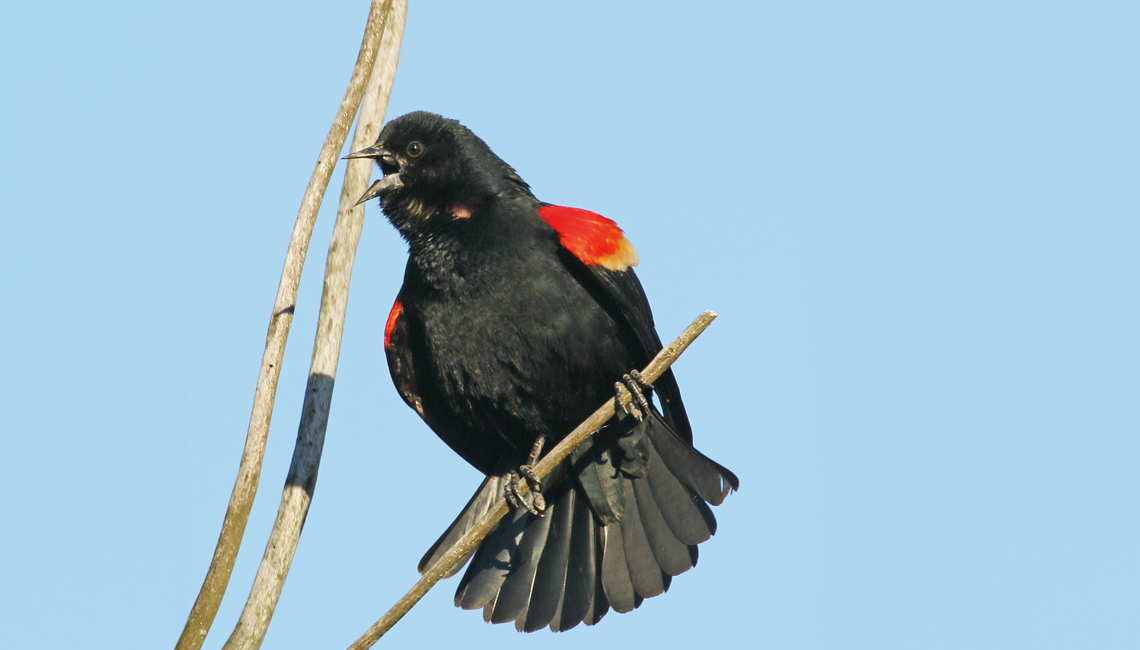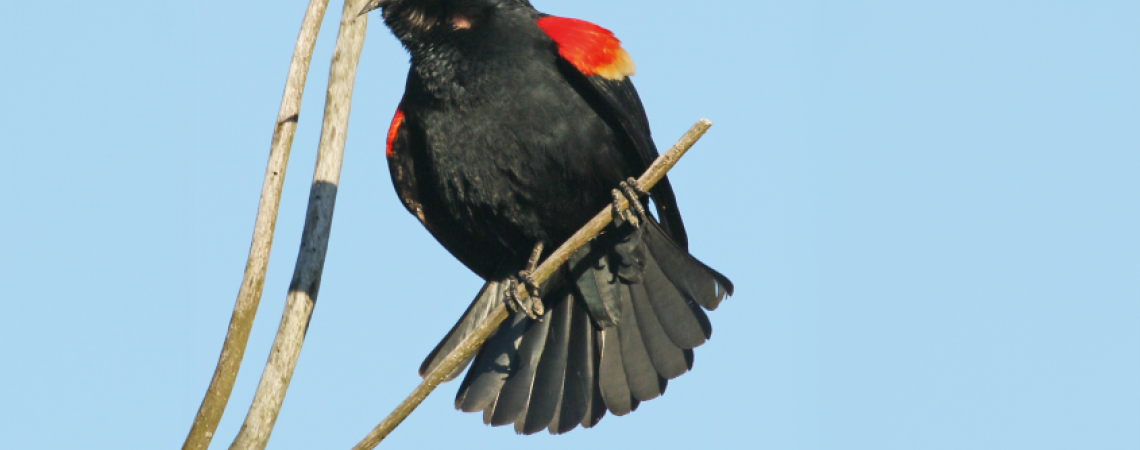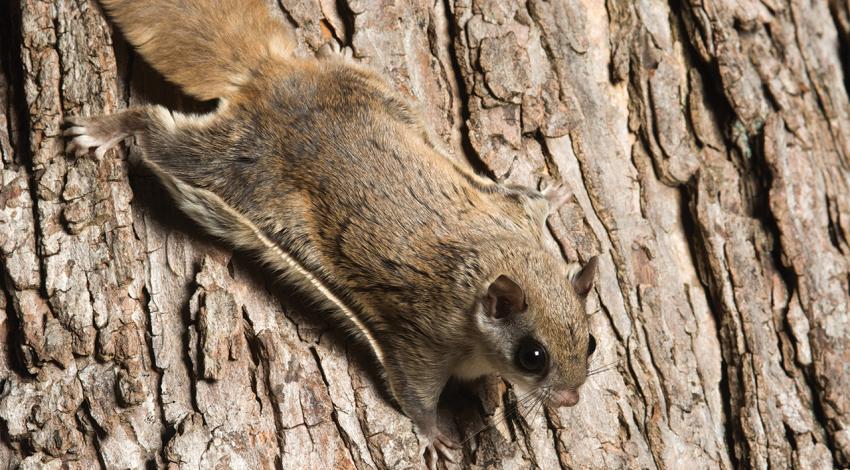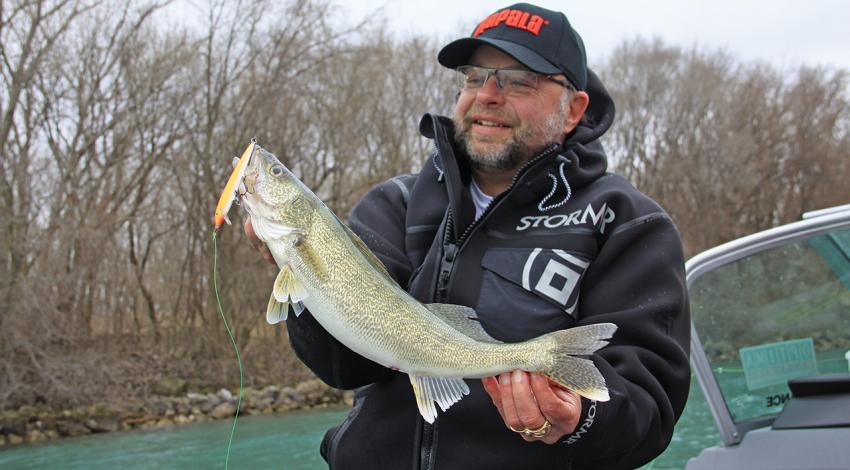This time of year, when most Ohioans can’t stand much more of winter, a certain songbird begins arriving in the Buckeye State with a promise that yet another spring is on its way.
Red-winged blackbirds are a common migrant through the state; the males arrive first, typically in March (though appearing as early as mid-to-late February some years), and females follow a few weeks later.
Red-winged blackbirds are considered by ornithologists to be one of the most abundant birds in North America, with their continental numbers estimated at well over 100 million.
Ubiquitous, conspicuous, and easy to identify, male red-winged blackbirds are a stunning glossy black, their wing epaulets — lesser wing coverts — flashing a vibrant red, highlighted by a yellow bottom-edge stripe. The sight of males bobbing on cattail stalks and sound of their familiar, gurgling “kon-ka-reee” song are sure signs that spring weather is not far off.
Even though that song is welcoming to our ears, it’s actually a shouted warning to other male redwings — in essence saying, “This is my turf, pal, back off!” The males jockey for breeding territories that they aggressively defend when challenged by other males. Male redwings will even chase away much larger birds of other species. For instance, you may have seen a redwing harassing a red-tailed hawk or vulture, and both of those raptors are many times the blackbird’s size.
Highly polygamous, a male redwing may entice as many as a dozen or more females to nest within his territory. But the mottled-brown, nondescript females are not always faithful to the harem master, either. Recent DNA studies have shown that not all females within a breeding territory bear offspring fathered by the resident male.
Famed ornithologist John Eastman wrote of redwings, “Males often stray when seeking food or vacant territories, frequently trespassing onto occupied territories. When they do, they cover their red ‘badges’ with black scapular feathers of the wing so that only the lower yellow margins of the epaulet show, thus reducing chances of being attacked by the territory holder.”
Eastman added, “Casual observation might indicate large amounts of variation in size of red patches among male redwings. The fact is that all males have epaulets of about the same size but, unless displaying, the birds often cover them to a greater or lesser degree.”
Red-winged blackbirds are considered by ornithologists to be one of the most abundant birds in North America, with their continental numbers estimated at well over 100 million.
The second and most recent atlas of Breeding Birds in Ohio, published in 2016, estimates the Buckeye State’s population at more than 1.5 million.
Like many songbirds, female redwings may nest more than once per season — two or possibly even three times is not uncommon. Egg incubation takes only 11 to 13 days, with the young birds fledging in about two weeks.
During late summer and early autumn, immediately after the breeding season, adults and young gather into migratory flocks in anticipation of their trip south for the winter. Often joined by other species of blackbirds, huge flocks can build throughout the fall. In November 1989, a single, mixed flock of blackbirds in Ottawa County along Lake Erie was estimated at an astonishing 140,000 birds.
When feeding along the ground, such mega-flocks often appear to “roll” across harvested crop fields. It’s an impressive sight, as the birds in the rear of the flock continually fly up and leapfrog over those birds in the lead.
So, take heart, winter-weary Buckeyes: If redwings haven’t arrived in your area just yet, they’re well on their way … guaranteed!
W.H. “Chip” Gross is Ohio Cooperative Living’s outdoors editor. Email him with your outdoors questions at whchipgross@gmail.com. Be sure to include “Ask Chip” in the subject of the email. Your question may be answered on www.ohiocoopliving.com!










